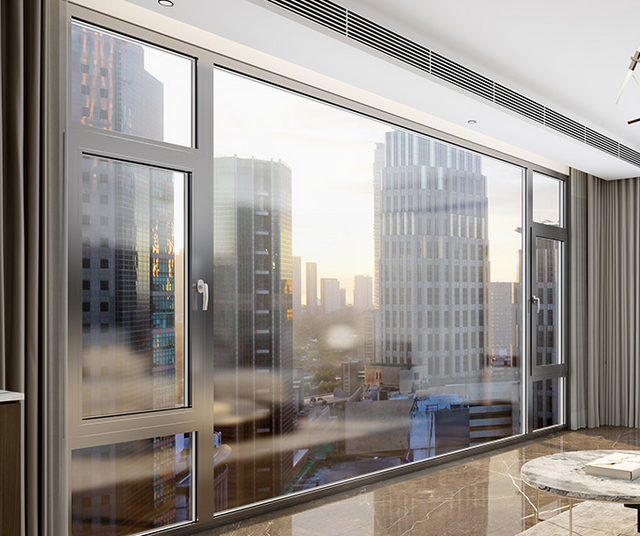Exploring the Types and Advantages of Aluminium Door Profile
Aluminium door frame profiles are integral components in modern architecture, offering a blend of functionality, durability, and aesthetic appeal. As building materials evolve to meet increasingly stringent demands for performance and design flexibility, aluminium stands out as a versatile choice for door frames. In this article, we delve into the various types of aluminium door profile available in the market today, highlighting their unique advantages and applications.
Types of Aluminium Door Frame Profiles
1. Standard Extruded Profiles:
Standard extruded aluminium profiles are perhaps the most common type used in door frame construction. These profiles are manufactured through a process where aluminium billets are heated and forced through a shaped opening in a die to create the desired cross-sectional shape. They come in a variety of shapes and sizes, ranging from simple rectangular or square profiles to more complex designs with rounded edges or decorative features.
Advantages:
Versatility: Standard profiles offer versatility in design and application, making them suitable for a wide range of door types and architectural styles.
Cost-effectiveness: They are generally more economical compared to specialized profiles, making them ideal for projects with budget constraints.
Customizability: Despite being standard, these profiles can be customized in terms of dimensions, finishes, and additional features like integrated weather seals or drainage systems.
2. Thermal Break Profiles:
Thermal break aluminium door profile are engineered to enhance thermal insulation by incorporating a barrier between the interior and exterior aluminium sections. This barrier, typically made of a non-conductive material like polyamide, minimizes heat transfer through the frame, thereby improving energy efficiency.
Advantages:
Energy Efficiency: Thermal break aluminium door profile help reduce heating and cooling costs by minimizing thermal bridging, where heat can escape or enter the building through the frame.
Condensation Control: They reduce the likelihood of condensation forming on the interior surface of the frame, which can lead to moisture-related issues such as mold growth.
Comfort: Improved insulation provided by thermal break aluminium door profile enhances indoor comfort by maintaining more stable indoor temperatures.
3. Slimline Profiles:
Slimline aluminium door profile are characterized by their narrow sightlines, offering a sleek and minimalist aesthetic. These profiles maximize the glazed area of the door, allowing for expansive views and increased natural light penetration.
Advantages:
Modern Design: Slimline profiles are favored in contemporary architecture for their clean lines and unobtrusive appearance.
Enhanced Views: They provide uninterrupted views of the outdoors, making them suitable for applications where aesthetics and visibility are paramount.
Lightweight: Despite their slim design, these profiles retain the structural integrity and durability associated with aluminium.
4. High-Performance Profiles:
High-performance aluminium door profile are designed to meet specific functional requirements beyond standard applications. These profiles often incorporate advanced features such as enhanced security measures, acoustic insulation properties, or resistance to extreme weather conditions.
Advantages:
Security: High-performance aluminium door profile can include features like multi-point locking systems and reinforced construction to enhance security against forced entry.
Acoustic Insulation: They help reduce noise transmission through doors, making them suitable for environments where soundproofing is critical, such as offices or residential buildings near busy streets.
Weather Resistance: Profiles designed for severe weather conditions offer increased protection against wind, rain, and temperature fluctuations, ensuring durability and longevity.
5. Custom Profiles:
Custom aluminium door frame profiles are tailored to specific project requirements, offering architects and designers unparalleled flexibility in design and functionality. These profiles are often fabricated to meet unique aesthetic preferences or performance criteria.
Advantages:
Tailored Solutions: Custom profiles allow for precise adaptation to architectural designs, accommodating non-standard shapes, sizes, and performance specifications.
Unique Aesthetics: They enable the creation of distinctive door frames that align with the overall design vision of the building.
Integration with Other Systems: Custom profiles can be designed to seamlessly integrate with other building systems, such as façade elements or interior partitions.

Advantages of Aluminium Door Frames in General
In addition to the specific advantages offered by different types of aluminium door frame profiles, aluminium as a material provides numerous benefits that contribute to its widespread use in construction:
Durability: Aluminium is corrosion-resistant and maintains its structural integrity over time, even in harsh environmental conditions.
Low Maintenance: Unlike materials such as wood, aluminium door frame profile require minimal maintenance, reducing lifecycle costs and upkeep efforts.
Design Flexibility: Aluminium can be extruded into various shapes and sizes, accommodating diverse architectural styles and design preferences.
Sustainability: Aluminium is recyclable and environmentally friendly, contributing to green building initiatives and sustainable construction practices.
Aluminium door frame profiles offer a compelling combination of versatility, durability, and aesthetic appeal, making them a preferred choice in contemporary building design. Whether opting for standard extruded profiles for cost-effective solutions, thermal break aluminium door profile for enhanced energy efficiency, slimline profiles for modern aesthetics, high-performance profiles for specialized applications, or custom profiles for tailored designs, architects and builders can find an aluminium solution that meets their exacting requirements. As architectural trends continue to evolve, aluminium remains at the forefront of innovation, supporting the creation of sustainable, efficient, and visually appealing building envelopes worldwide.


